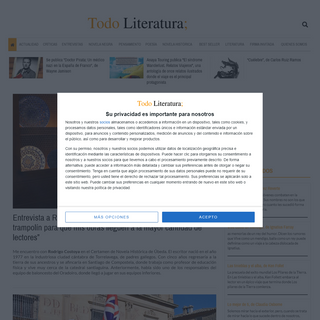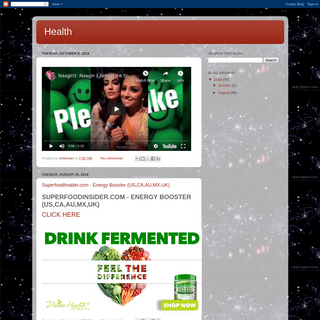Are you over 18 and want to see adult content?
More Annotations

A complete backup of todoliteratura.es
Are you over 18 and want to see adult content?

A complete backup of securcareselfstorage.com
Are you over 18 and want to see adult content?
Favourite Annotations

A complete backup of theoxfordhotel.com
Are you over 18 and want to see adult content?

A complete backup of wanderlustandco.com
Are you over 18 and want to see adult content?

A complete backup of dystopianworldsathol.weebly.com
Are you over 18 and want to see adult content?

A complete backup of billboardmusicawards.com
Are you over 18 and want to see adult content?

A complete backup of floatinghomes.de
Are you over 18 and want to see adult content?

A complete backup of mtgcardsmith.com
Are you over 18 and want to see adult content?

A complete backup of radiofreebrooklyn.com
Are you over 18 and want to see adult content?

A complete backup of resourcewell.org
Are you over 18 and want to see adult content?

A complete backup of healthpro17.blogspot.com
Are you over 18 and want to see adult content?
Text
materials.
HOW TO CHOOSE THE CORRECT WAVELENGTH IN ICP-OES 2. Pick the top one or two wavelengths suggested by the software. 3. Do your research. 4. Know your sample matrix. What are the majorcomponents?
SPECTROSCOPY ONLINETONY BRISTOWPRAKRIYA SHRESTHAGLASS EXPANSION, INCADAM HEUBERGERJUN KOSHOUBU L. Robert Baker is an associate professor at The Ohio State University in the Department of Chemistry & Biochemistry. His research focuses on X-ray spectroscopy, nonlinear and time-resolved spectroscopy, the chemistry of surfaces and interface science, and energy conversion and catalysis—work that may lead to better solar energy conversionmaterials.
HOW TO CHOOSE THE CORRECT WAVELENGTH IN ICP-OES 2. Pick the top one or two wavelengths suggested by the software. 3. Do your research. 4. Know your sample matrix. What are the majorcomponents?
CLASSICAL LEAST SQUARES, PART I: MATHEMATICAL THEORY Howard Mark Our next victim for this type of analysis is the algorithm known as classical least squares (CLS), also known as direct least squares, the Beer's law method, and also as the K-matrix calibration algorithm, although use of this last term (as well as the corresponding "P-matrix") is discouraged, due to confusion caused by the plethora of names for the same methodology. THE C=O BOND, PART IV: ACID ANHYDRIDES Figure 1: The reaction of two carboxylic acid molecules to give an acid anhydride and water. The "R" moieties represent carbon atoms. The term anhydride means "no water" and is appropriate because of the water molecule that is split off during this reaction. Anhydrides are named after the carboxylic acids they are made from. SIMPLIFY YOUR ICP-OES ANALYSES WHILE OPTIMIZING *Live: Tuesday, June 8, 2021 at 11am EDT| 8am PDT| 4pm GMT|5pm CET* Don’t miss the opportunity to discover how key software and hardware technologies can help reduce turnaround time and improve your results. *On Demand Until June 8, 2022* THE C=O BOND, PART II: ALDEHYDES Aldehydes feature a unique “lone hydrogen” atom, giving rise to unique C-H stretching and bending peaks, making them easy to spot. In this installment, a new feature is also presented, “IR Spectral Interpretation Review,” where key concepts from past columns are presented for those new to the column and for readers who need arefresher.
BREEZETM – FULL COVERAGE FROM 400 NM TO 2500 NM BaySpec introduces BreezeTM, the world’s smartest palm spectrometer for 400–2500 nm. Breeze efficiently provides maximum sensitivity with ultrafast acquisition. CAROTENOIDS—THEIR RESONANCE RAMAN SPECTRA AND HOW THEY CAN Modeling the Spectra of Carotenoids with Polyenes. The carotenoids are a class of highly colored materials whose electronic absorption is derived from the polyene backbone of the molecule. A polyene is a hydrocarbon chain with alternating double and single bonds between the carbon atoms. The π electrons from the double bonds are conjugated onto the single bonds; the lowered electron density RAMAN SPECTROSCOPY FOR REACTION MONITORING In this application note, we use a modular Raman spectrometer setup to monitor the kinetics and reaction completion of a quick-curing,two-part epoxy.
TIPS FOR INSTRUMENT MAINTENANCE AND ANALYSIS � 2021 MJH Life Sciences ™ and Spectroscopy Online. All rightsreserved.
SPATIOSPECTRAL NANOIMAGING OF SURFACE PHONON PLASMONS Combining imaging with broadband spectroscopy provides spatiospectral nanoimaging of 2D materials with nanometer spatial resolution and widespectral coverage.
POLYMORPH MONITORING WITH HANDHELD RAMAN This application note demonstrates handheld Raman's ability to analyze polymorph transformations and thus differentiate them from each other. SPECTROSCOPY ONLINETONY BRISTOWPRAKRIYA SHRESTHAGLASS EXPANSION, INCADAM HEUBERGERJUN KOSHOUBU L. Robert Baker is an associate professor at The Ohio State University in the Department of Chemistry & Biochemistry. His research focuses on X-ray spectroscopy, nonlinear and time-resolved spectroscopy, the chemistry of surfaces and interface science, and energy conversion and catalysis—work that may lead to better solar energy conversionmaterials.
THE DETERMINATION OF NITROGEN AND OTHER ESSENTIAL ELEMENTSSEE MORE ON SPECTROSCOPYONLINE.COM SPECTROSCOPY ONLINETONY BRISTOWPRAKRIYA SHRESTHAGLASS EXPANSION, INCADAM HEUBERGERJUN KOSHOUBU L. Robert Baker is an associate professor at The Ohio State University in the Department of Chemistry & Biochemistry. His research focuses on X-ray spectroscopy, nonlinear and time-resolved spectroscopy, the chemistry of surfaces and interface science, and energy conversion and catalysis—work that may lead to better solar energy conversionmaterials.
THE DETERMINATION OF NITROGEN AND OTHER ESSENTIAL ELEMENTSSEE MORE ON SPECTROSCOPYONLINE.COM A TIMELINE OF ATOMIC SPECTROSCOPY 1802: English scientist William Hyde Wollaston (1766–1828) is the first to observe dark lines in the spectrum of the sun. 1814: The German optician Joseph von Frauenhofer (1787–1826) invents the transmission diffraction grating and makes a detailed study of the dark lines in the solar spectrum. RAMAN TECHNOLOGY FOR TODAY'S SPECTROSCOPISTS 2021 A Powerful and Versatile Solution for Ultra-trace Elemental Analyses New Developments in Multi Quadrupole ICP-MS Today’s Raman Microscopy Applications – A Sponsored Virtual Symposium Spectral Subtraction The 2021 Emerging Leader in Atomic Spectroscopy Award HOW TO CHOOSE THE CORRECT WAVELENGTH IN ICP-OES During initial method development, it's a good idea to pick at least 2–3 wavelengths for each element to evaluate which is better suited for typical samples. Choosing more than 2–3 wavelengths is acceptable, but could result in a significant and overwhelming amount of data to review. Do Your Research. DEMYSTIFYING FIT-FOR-PURPOSE FOR RAMAN AND NIR INSTRUMENTS *Live: Wednesday, June 9, 2021 at 1pm EDT| 12pm CDT| 10am PDT* Join Lucy Botros, the USP Scientific Liason for General Chapters, and Adam J. Hopkins, Spectroscopy Product Manager at Metrohm USA, as they team up to demystify how to comply with USP methods to make an analyzer or method fit for purpose. Lucy will explain the new structure and philosophy of the spectroscopy chapters, and how WAVELENGTH STANDARDS FOR THE NEAR-INFRARED SPECTRAL REGION This article compares three regulatory standards for near-infrared wavelength references and then reviews currently available materials. Reference types discussed include gas and vapor band spectra, solid artifacts in both transmittance and reflectance, and liquids in transmittance. Traceability issues are discussed in connection with calibration and qualification regulatory compliance THE HYDROGEN BONDING MODE OF 5-FLUOROURACIL-PROLINE CO This work shows that the combination of THz-TDS and DFT can provide an effective method to investigate the connection mode of hydrogen bonds and thus aid in characterizing compounds such as this potential drugcandidate.
CLASSICAL LEAST SQUARES, PART I: MATHEMATICAL THEORY Howard Mark Our next victim for this type of analysis is the algorithm known as classical least squares (CLS), also known as direct least squares, the Beer's law method, and also as the K-matrix calibration algorithm, although use of this last term (as well as the corresponding "P-matrix") is discouraged, due to confusion caused by the plethora of names for the same methodology. THE C=O BOND, PART IV: ACID ANHYDRIDES If the lower-wavenumber peak is more intense it is cyclic. Then use the position of the two C=O stretches and Table II to determine whether the anhydride is cyclic saturated or cyclic unsaturated. Like noncyclic anhydrides, cyclic anhydrides have a C-O bond and hence a C-O stretch. It falls anywhere from 1300 to 1000. HONGBO LI - SPECTROSCOPYONLINE.COM � 2021 MJH Life Sciences and Spectroscopy Online. All rightsreserved.
YU GUAN - SPECTROSCOPYONLINE.COM � 2021 MJH Life Sciences and Spectroscopy Online. All rightsreserved.
SPECTROSCOPY ONLINETONY BRISTOWPRAKRIYA SHRESTHAGLASS EXPANSION, INCADAM HEUBERGERJUN KOSHOUBU L. Robert Baker is an associate professor at The Ohio State University in the Department of Chemistry & Biochemistry. His research focuses on X-ray spectroscopy, nonlinear and time-resolved spectroscopy, the chemistry of surfaces and interface science, and energy conversion and catalysis—work that may lead to better solar energy conversionmaterials.
THE DETERMINATION OF NITROGEN AND OTHER ESSENTIAL ELEMENTSSEE MORE ON SPECTROSCOPYONLINE.COM SPECTROSCOPY ONLINETONY BRISTOWPRAKRIYA SHRESTHAGLASS EXPANSION, INCADAM HEUBERGERJUN KOSHOUBU L. Robert Baker is an associate professor at The Ohio State University in the Department of Chemistry & Biochemistry. His research focuses on X-ray spectroscopy, nonlinear and time-resolved spectroscopy, the chemistry of surfaces and interface science, and energy conversion and catalysis—work that may lead to better solar energy conversionmaterials.
THE DETERMINATION OF NITROGEN AND OTHER ESSENTIAL ELEMENTSSEE MORE ON SPECTROSCOPYONLINE.COM A TIMELINE OF ATOMIC SPECTROSCOPY 1802: English scientist William Hyde Wollaston (1766–1828) is the first to observe dark lines in the spectrum of the sun. 1814: The German optician Joseph von Frauenhofer (1787–1826) invents the transmission diffraction grating and makes a detailed study of the dark lines in the solar spectrum. RAMAN TECHNOLOGY FOR TODAY'S SPECTROSCOPISTS 2021 A Powerful and Versatile Solution for Ultra-trace Elemental Analyses New Developments in Multi Quadrupole ICP-MS Today’s Raman Microscopy Applications – A Sponsored Virtual Symposium Spectral Subtraction The 2021 Emerging Leader in Atomic Spectroscopy Award HOW TO CHOOSE THE CORRECT WAVELENGTH IN ICP-OES During initial method development, it's a good idea to pick at least 2–3 wavelengths for each element to evaluate which is better suited for typical samples. Choosing more than 2–3 wavelengths is acceptable, but could result in a significant and overwhelming amount of data to review. Do Your Research. DEMYSTIFYING FIT-FOR-PURPOSE FOR RAMAN AND NIR INSTRUMENTS *Live: Wednesday, June 9, 2021 at 1pm EDT| 12pm CDT| 10am PDT* Join Lucy Botros, the USP Scientific Liason for General Chapters, and Adam J. Hopkins, Spectroscopy Product Manager at Metrohm USA, as they team up to demystify how to comply with USP methods to make an analyzer or method fit for purpose. Lucy will explain the new structure and philosophy of the spectroscopy chapters, and how WAVELENGTH STANDARDS FOR THE NEAR-INFRARED SPECTRAL REGION This article compares three regulatory standards for near-infrared wavelength references and then reviews currently available materials. Reference types discussed include gas and vapor band spectra, solid artifacts in both transmittance and reflectance, and liquids in transmittance. Traceability issues are discussed in connection with calibration and qualification regulatory compliance THE HYDROGEN BONDING MODE OF 5-FLUOROURACIL-PROLINE CO This work shows that the combination of THz-TDS and DFT can provide an effective method to investigate the connection mode of hydrogen bonds and thus aid in characterizing compounds such as this potential drugcandidate.
CLASSICAL LEAST SQUARES, PART I: MATHEMATICAL THEORY Howard Mark Our next victim for this type of analysis is the algorithm known as classical least squares (CLS), also known as direct least squares, the Beer's law method, and also as the K-matrix calibration algorithm, although use of this last term (as well as the corresponding "P-matrix") is discouraged, due to confusion caused by the plethora of names for the same methodology. THE C=O BOND, PART IV: ACID ANHYDRIDES If the lower-wavenumber peak is more intense it is cyclic. Then use the position of the two C=O stretches and Table II to determine whether the anhydride is cyclic saturated or cyclic unsaturated. Like noncyclic anhydrides, cyclic anhydrides have a C-O bond and hence a C-O stretch. It falls anywhere from 1300 to 1000. HONGBO LI - SPECTROSCOPYONLINE.COM � 2021 MJH Life Sciences and Spectroscopy Online. All rightsreserved.
YU GUAN - SPECTROSCOPYONLINE.COM � 2021 MJH Life Sciences and Spectroscopy Online. All rightsreserved.
SPECTROSCOPY ONLINETONY BRISTOWPRAKRIYA SHRESTHAGLASS EXPANSION, INCADAM HEUBERGERJUN KOSHOUBU L. Robert Baker is an associate professor at The Ohio State University in the Department of Chemistry & Biochemistry. His research focuses on X-ray spectroscopy, nonlinear and time-resolved spectroscopy, the chemistry of surfaces and interface science, and energy conversion and catalysis—work that may lead to better solar energy conversionmaterials.
THE DETERMINATION OF NITROGEN AND OTHER ESSENTIAL ELEMENTSSEE MORE ON SPECTROSCOPYONLINE.COM SPECTROSCOPY ONLINETONY BRISTOWPRAKRIYA SHRESTHAGLASS EXPANSION, INCADAM HEUBERGERJUN KOSHOUBU L. Robert Baker is an associate professor at The Ohio State University in the Department of Chemistry & Biochemistry. His research focuses on X-ray spectroscopy, nonlinear and time-resolved spectroscopy, the chemistry of surfaces and interface science, and energy conversion and catalysis—work that may lead to better solar energy conversionmaterials.
THE DETERMINATION OF NITROGEN AND OTHER ESSENTIAL ELEMENTSSEE MORE ON SPECTROSCOPYONLINE.COM A TIMELINE OF ATOMIC SPECTROSCOPY 1802: English scientist William Hyde Wollaston (1766–1828) is the first to observe dark lines in the spectrum of the sun. 1814: The German optician Joseph von Frauenhofer (1787–1826) invents the transmission diffraction grating and makes a detailed study of the dark lines in the solar spectrum. RAMAN TECHNOLOGY FOR TODAY'S SPECTROSCOPISTS 2021 A Powerful and Versatile Solution for Ultra-trace Elemental Analyses New Developments in Multi Quadrupole ICP-MS Today’s Raman Microscopy Applications – A Sponsored Virtual Symposium Spectral Subtraction The 2021 Emerging Leader in Atomic Spectroscopy Award HOW TO CHOOSE THE CORRECT WAVELENGTH IN ICP-OES During initial method development, it's a good idea to pick at least 2–3 wavelengths for each element to evaluate which is better suited for typical samples. Choosing more than 2–3 wavelengths is acceptable, but could result in a significant and overwhelming amount of data to review. Do Your Research. DEMYSTIFYING FIT-FOR-PURPOSE FOR RAMAN AND NIR INSTRUMENTS *Live: Wednesday, June 9, 2021 at 1pm EDT| 12pm CDT| 10am PDT* Join Lucy Botros, the USP Scientific Liason for General Chapters, and Adam J. Hopkins, Spectroscopy Product Manager at Metrohm USA, as they team up to demystify how to comply with USP methods to make an analyzer or method fit for purpose. Lucy will explain the new structure and philosophy of the spectroscopy chapters, and how WAVELENGTH STANDARDS FOR THE NEAR-INFRARED SPECTRAL REGION This article compares three regulatory standards for near-infrared wavelength references and then reviews currently available materials. Reference types discussed include gas and vapor band spectra, solid artifacts in both transmittance and reflectance, and liquids in transmittance. Traceability issues are discussed in connection with calibration and qualification regulatory compliance THE HYDROGEN BONDING MODE OF 5-FLUOROURACIL-PROLINE CO This work shows that the combination of THz-TDS and DFT can provide an effective method to investigate the connection mode of hydrogen bonds and thus aid in characterizing compounds such as this potential drugcandidate.
CLASSICAL LEAST SQUARES, PART I: MATHEMATICAL THEORY Howard Mark Our next victim for this type of analysis is the algorithm known as classical least squares (CLS), also known as direct least squares, the Beer's law method, and also as the K-matrix calibration algorithm, although use of this last term (as well as the corresponding "P-matrix") is discouraged, due to confusion caused by the plethora of names for the same methodology. THE C=O BOND, PART IV: ACID ANHYDRIDES If the lower-wavenumber peak is more intense it is cyclic. Then use the position of the two C=O stretches and Table II to determine whether the anhydride is cyclic saturated or cyclic unsaturated. Like noncyclic anhydrides, cyclic anhydrides have a C-O bond and hence a C-O stretch. It falls anywhere from 1300 to 1000. HONGBO LI - SPECTROSCOPYONLINE.COM � 2021 MJH Life Sciences and Spectroscopy Online. All rightsreserved.
YU GUAN - SPECTROSCOPYONLINE.COM � 2021 MJH Life Sciences and Spectroscopy Online. All rightsreserved.
SPECTROSCOPY ONLINETONY BRISTOWPRAKRIYA SHRESTHAGLASS EXPANSION, INCADAM HEUBERGERJUN KOSHOUBU L. Robert Baker is an associate professor at The Ohio State University in the Department of Chemistry & Biochemistry. His research focuses on X-ray spectroscopy, nonlinear and time-resolved spectroscopy, the chemistry of surfaces and interface science, and energy conversion and catalysis—work that may lead to better solar energy conversionmaterials.
THE DETERMINATION OF NITROGEN AND OTHER ESSENTIAL ELEMENTSSEE MORE ON SPECTROSCOPYONLINE.COM SPECTROSCOPY ONLINETONY BRISTOWPRAKRIYA SHRESTHAGLASS EXPANSION, INCADAM HEUBERGERJUN KOSHOUBU L. Robert Baker is an associate professor at The Ohio State University in the Department of Chemistry & Biochemistry. His research focuses on X-ray spectroscopy, nonlinear and time-resolved spectroscopy, the chemistry of surfaces and interface science, and energy conversion and catalysis—work that may lead to better solar energy conversionmaterials.
THE DETERMINATION OF NITROGEN AND OTHER ESSENTIAL ELEMENTSSEE MORE ON SPECTROSCOPYONLINE.COM A TIMELINE OF ATOMIC SPECTROSCOPY 1666: Isaac Newton (1642–1727) (Figure 1) shows that the white light from the sun could be dispersed into a continuous series of colors.He coined the word "spectrum." His apparatus, an aperture to define a light beam, a lens, a prism, and a screen, was the first spectroscope. RAMAN TECHNOLOGY FOR TODAY'S SPECTROSCOPISTS 2021 A Powerful and Versatile Solution for Ultra-trace Elemental Analyses New Developments in Multi Quadrupole ICP-MS Today’s Raman Microscopy Applications – A Sponsored Virtual Symposium Spectral Subtraction The 2021 Emerging Leader in Atomic Spectroscopy Award HOW TO CHOOSE THE CORRECT WAVELENGTH IN ICP-OES 2. Pick the top one or two wavelengths suggested by the software. 3. Do your research. 4. Know your sample matrix. What are the majorcomponents?
DEMYSTIFYING FIT-FOR-PURPOSE FOR RAMAN AND NIR INSTRUMENTS *Live: Wednesday, June 9, 2021 at 1pm EDT| 12pm CDT| 10am PDT* Join Lucy Botros, the USP Scientific Liason for General Chapters, and Adam J. Hopkins, Spectroscopy Product Manager at Metrohm USA, as they team up to demystify how to comply with USP methods to make an analyzer or method fit for purpose. Lucy will explain the new structure and philosophy of the spectroscopy chapters, and how WAVELENGTH STANDARDS FOR THE NEAR-INFRARED SPECTRAL REGION This article compares three regulatory standards for near-infrared wavelength references and then reviews currently available materials. Reference types discussed include gas and vapor band spectra, solid artifacts in both transmittance and reflectance, and liquids in transmittance. Traceability issues are discussed in connection with calibration and qualification regulatory compliance THE HYDROGEN BONDING MODE OF 5-FLUOROURACIL-PROLINE CO This work shows that the combination of THz-TDS and DFT can provide an effective method to investigate the connection mode of hydrogen bonds and thus aid in characterizing compounds such as this potential drugcandidate.
CLASSICAL LEAST SQUARES, PART I: MATHEMATICAL THEORY Howard Mark Our next victim for this type of analysis is the algorithm known as classical least squares (CLS), also known as direct least squares, the Beer's law method, and also as the K-matrix calibration algorithm, although use of this last term (as well as the corresponding "P-matrix") is discouraged, due to confusion caused by the plethora of names for the same methodology. THE C=O BOND, PART IV: ACID ANHYDRIDES Figure 1: The reaction of two carboxylic acid molecules to give an acid anhydride and water. The "R" moieties represent carbon atoms. The term anhydride means "no water" and is appropriate because of the water molecule that is split off during this reaction. Anhydrides are named after the carboxylic acids they are made from. HONGBO LI - SPECTROSCOPYONLINE.COM � 2021 MJH Life Sciences and Spectroscopy Online. All rightsreserved.
YU GUAN - SPECTROSCOPYONLINE.COM � 2021 MJH Life Sciences and Spectroscopy Online. All rightsreserved.
SPECTROSCOPY ONLINETONY BRISTOWPRAKRIYA SHRESTHAGLASS EXPANSION, INCADAM HEUBERGERJUN KOSHOUBU L. Robert Baker is an associate professor at The Ohio State University in the Department of Chemistry & Biochemistry. His research focuses on X-ray spectroscopy, nonlinear and time-resolved spectroscopy, the chemistry of surfaces and interface science, and energy conversion and catalysis—work that may lead to better solar energy conversionmaterials.
HOW TO CHOOSE THE CORRECT WAVELENGTH IN ICP-OES During initial method development, it's a good idea to pick at least 2–3 wavelengths for each element to evaluate which is better suited for typical samples. Choosing more than 2–3 wavelengths is acceptable, but could result in a significant and overwhelming amount of data to review. Do Your Research. WAVELENGTH STANDARDS FOR THE NEAR-INFRARED SPECTRAL REGION This article compares three regulatory standards for near-infrared wavelength references and then reviews currently available materials. Reference types discussed include gas and vapor band spectra, solid artifacts in both transmittance and reflectance, and liquids in transmittance. Traceability issues are discussed in connection with calibration and qualification regulatory compliance IR SPECTRAL INTERPRETATION WORKSHOP SPECTROSCOPY ONLINETONY BRISTOWPRAKRIYA SHRESTHAGLASS EXPANSION, INCADAM HEUBERGERJUN KOSHOUBU L. Robert Baker is an associate professor at The Ohio State University in the Department of Chemistry & Biochemistry. His research focuses on X-ray spectroscopy, nonlinear and time-resolved spectroscopy, the chemistry of surfaces and interface science, and energy conversion and catalysis—work that may lead to better solar energy conversionmaterials.
HOW TO CHOOSE THE CORRECT WAVELENGTH IN ICP-OES During initial method development, it's a good idea to pick at least 2–3 wavelengths for each element to evaluate which is better suited for typical samples. Choosing more than 2–3 wavelengths is acceptable, but could result in a significant and overwhelming amount of data to review. Do Your Research. WAVELENGTH STANDARDS FOR THE NEAR-INFRARED SPECTRAL REGION This article compares three regulatory standards for near-infrared wavelength references and then reviews currently available materials. Reference types discussed include gas and vapor band spectra, solid artifacts in both transmittance and reflectance, and liquids in transmittance. Traceability issues are discussed in connection with calibration and qualification regulatory compliance IR SPECTRAL INTERPRETATION WORKSHOP A TIMELINE OF ATOMIC SPECTROSCOPY 1802: English scientist William Hyde Wollaston (1766–1828) is the first to observe dark lines in the spectrum of the sun. 1814: The German optician Joseph von Frauenhofer (1787–1826) invents the transmission diffraction grating and makes a detailed study of the dark lines in the solar spectrum. THE HYDROGEN BONDING MODE OF 5-FLUOROURACIL-PROLINE CO This work shows that the combination of THz-TDS and DFT can provide an effective method to investigate the connection mode of hydrogen bonds and thus aid in characterizing compounds such as this potential drugcandidate.
RAMAN TECHNOLOGY FOR TODAY'S SPECTROSCOPISTS 2021 A Powerful and Versatile Solution for Ultra-trace Elemental Analyses New Developments in Multi Quadrupole ICP-MS Today’s Raman Microscopy Applications – A Sponsored Virtual Symposium Spectral Subtraction The 2021 Emerging Leader in Atomic Spectroscopy Award ABSOLUTE QUANTIFICATION OF PROTEINS AND PEPTIDES BY ICP-MS Conclusion. Double isotope dilution triple-quadrupole ICP-MS is an innovative method for the absolute quantification of pure proteins. The precision and accuracy of this methodology bear no comparison to the traditional methods used in most analytical laboratories, such as amino acid analysis. CLASSICAL LEAST SQUARES, PART I: MATHEMATICAL THEORY Howard Mark Our next victim for this type of analysis is the algorithm known as classical least squares (CLS), also known as direct least squares, the Beer's law method, and also as the K-matrix calibration algorithm, although use of this last term (as well as the corresponding "P-matrix") is discouraged, due to confusion caused by the plethora of names for the same methodology. DEMYSTIFYING FIT-FOR-PURPOSE FOR RAMAN AND NIR INSTRUMENTS *Live: Wednesday, June 9, 2021 at 1pm EDT| 12pm CDT| 10am PDT* Join Lucy Botros, the USP Scientific Liason for General Chapters, and Adam J. Hopkins, Spectroscopy Product Manager at Metrohm USA, as they team up to demystify how to comply with USP methods to make an analyzer or method fit for purpose. Lucy will explain the new structure and philosophy of the spectroscopy chapters, and how THE C=O BOND, PART IV: ACID ANHYDRIDES If the lower-wavenumber peak is more intense it is cyclic. Then use the position of the two C=O stretches and Table II to determine whether the anhydride is cyclic saturated or cyclic unsaturated. Like noncyclic anhydrides, cyclic anhydrides have a C-O bond and hence a C-O stretch. It falls anywhere from 1300 to 1000.SUN FEI
� 2021 MJH Life Sciences and Spectroscopy Online. All rightsreserved.
YU GUAN - SPECTROSCOPYONLINE.COM � 2021 MJH Life Sciences and Spectroscopy Online. All rightsreserved.
GANG HU
� 2021 MJH Life Sciences and Spectroscopy Online. All rightsreserved.
SPECTROSCOPY ONLINETONY BRISTOWPRAKRIYA SHRESTHAGLASS EXPANSION, INCADAM HEUBERGERJUN KOSHOUBU L. Robert Baker is an associate professor at The Ohio State University in the Department of Chemistry & Biochemistry. His research focuses on X-ray spectroscopy, nonlinear and time-resolved spectroscopy, the chemistry of surfaces and interface science, and energy conversion and catalysis—work that may lead to better solar energy conversionmaterials.
HOW TO CHOOSE THE CORRECT WAVELENGTH IN ICP-OES During initial method development, it's a good idea to pick at least 2–3 wavelengths for each element to evaluate which is better suited for typical samples. Choosing more than 2–3 wavelengths is acceptable, but could result in a significant and overwhelming amount of data to review. Do Your Research. WAVELENGTH STANDARDS FOR THE NEAR-INFRARED SPECTRAL REGION This article compares three regulatory standards for near-infrared wavelength references and then reviews currently available materials. Reference types discussed include gas and vapor band spectra, solid artifacts in both transmittance and reflectance, and liquids in transmittance. Traceability issues are discussed in connection with calibration and qualification regulatory compliance IR SPECTRAL INTERPRETATION WORKSHOP SPECTROSCOPY ONLINETONY BRISTOWPRAKRIYA SHRESTHAGLASS EXPANSION, INCADAM HEUBERGERJUN KOSHOUBU L. Robert Baker is an associate professor at The Ohio State University in the Department of Chemistry & Biochemistry. His research focuses on X-ray spectroscopy, nonlinear and time-resolved spectroscopy, the chemistry of surfaces and interface science, and energy conversion and catalysis—work that may lead to better solar energy conversionmaterials.
HOW TO CHOOSE THE CORRECT WAVELENGTH IN ICP-OES During initial method development, it's a good idea to pick at least 2–3 wavelengths for each element to evaluate which is better suited for typical samples. Choosing more than 2–3 wavelengths is acceptable, but could result in a significant and overwhelming amount of data to review. Do Your Research. WAVELENGTH STANDARDS FOR THE NEAR-INFRARED SPECTRAL REGION This article compares three regulatory standards for near-infrared wavelength references and then reviews currently available materials. Reference types discussed include gas and vapor band spectra, solid artifacts in both transmittance and reflectance, and liquids in transmittance. Traceability issues are discussed in connection with calibration and qualification regulatory compliance IR SPECTRAL INTERPRETATION WORKSHOP A TIMELINE OF ATOMIC SPECTROSCOPY 1802: English scientist William Hyde Wollaston (1766–1828) is the first to observe dark lines in the spectrum of the sun. 1814: The German optician Joseph von Frauenhofer (1787–1826) invents the transmission diffraction grating and makes a detailed study of the dark lines in the solar spectrum. THE HYDROGEN BONDING MODE OF 5-FLUOROURACIL-PROLINE CO This work shows that the combination of THz-TDS and DFT can provide an effective method to investigate the connection mode of hydrogen bonds and thus aid in characterizing compounds such as this potential drugcandidate.
FLUORESCENT LIGHTS
Fluorescence. Fluorescence is a process by which a substance absorbs light and then emits light of a different wavelength. In most cases, fluorescing materials emit light of lower frequency and energy than is absorbed, although there are occasionally two-photon emissions in which the emitted light is ABSOLUTE QUANTIFICATION OF PROTEINS AND PEPTIDES BY ICP-MS Conclusion. Double isotope dilution triple-quadrupole ICP-MS is an innovative method for the absolute quantification of pure proteins. The precision and accuracy of this methodology bear no comparison to the traditional methods used in most analytical laboratories, such as amino acid analysis. DEMYSTIFYING FIT-FOR-PURPOSE FOR RAMAN AND NIR INSTRUMENTS *Live: Wednesday, June 9, 2021 at 1pm EDT| 12pm CDT| 10am PDT* Join Lucy Botros, the USP Scientific Liason for General Chapters, and Adam J. Hopkins, Spectroscopy Product Manager at Metrohm USA, as they team up to demystify how to comply with USP methods to make an analyzer or method fit for purpose. Lucy will explain the new structure and philosophy of the spectroscopy chapters, and how THE C=O BOND, PART IV: ACID ANHYDRIDES If the lower-wavenumber peak is more intense it is cyclic. Then use the position of the two C=O stretches and Table II to determine whether the anhydride is cyclic saturated or cyclic unsaturated. Like noncyclic anhydrides, cyclic anhydrides have a C-O bond and hence a C-O stretch. It falls anywhere from 1300 to 1000. FAST AND ROBUST ASSESSMENT OF WATER QUALITY This note demonstrates the suitability of ICP-OES for fast, sensitive, and robust elemental analysis of water samples, following the DIN EN ISO 11885:2009 requirements. HONGBO LI - SPECTROSCOPYONLINE.COM � 2021 MJH Life Sciences and Spectroscopy Online. All rightsreserved.
YU GUAN - SPECTROSCOPYONLINE.COM � 2021 MJH Life Sciences and Spectroscopy Online. All rightsreserved.
GANG HU
� 2021 MJH Life Sciences and Spectroscopy Online. All rightsreserved.
Details
Copyright © 2024 ArchiveBay.com. All rights reserved. Terms of Use | Privacy Policy | DMCA | 2021 | Feedback | Advertising | RSS 2.0













